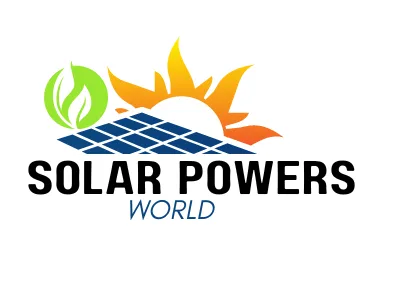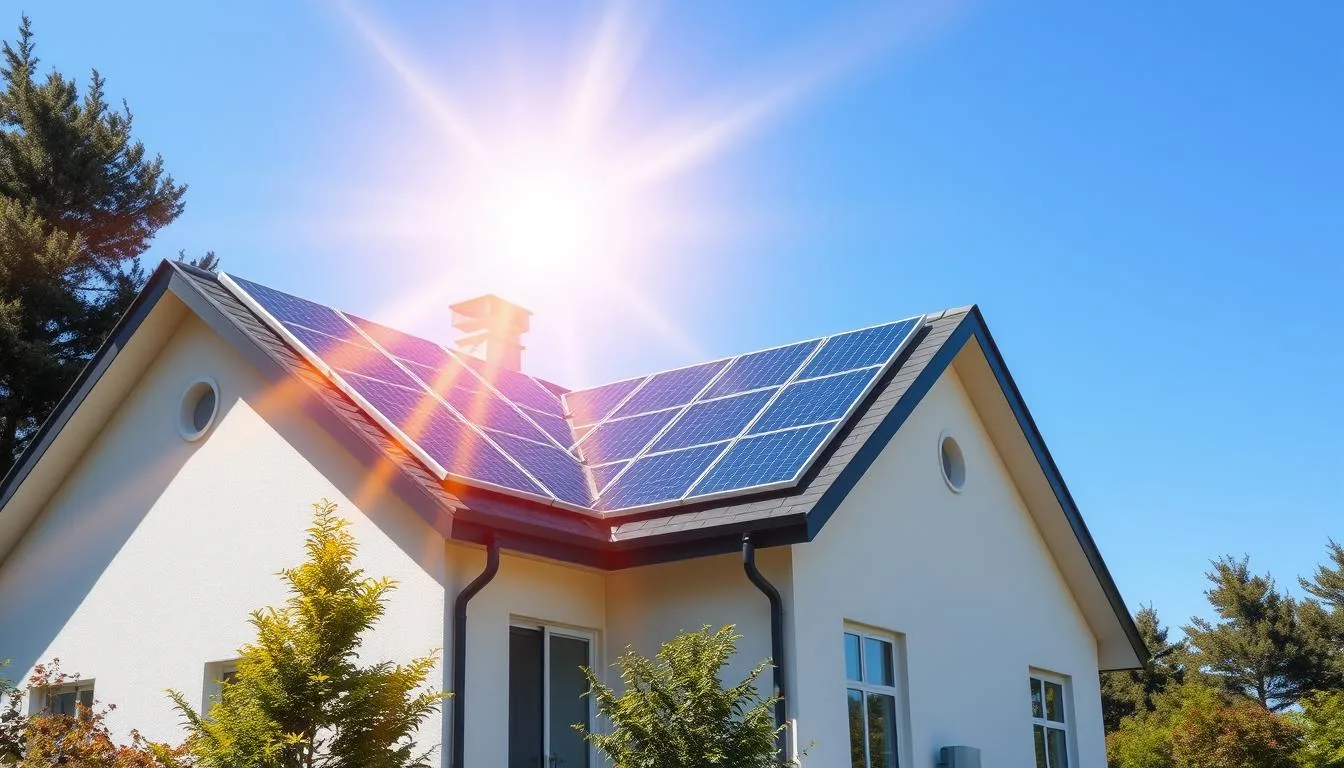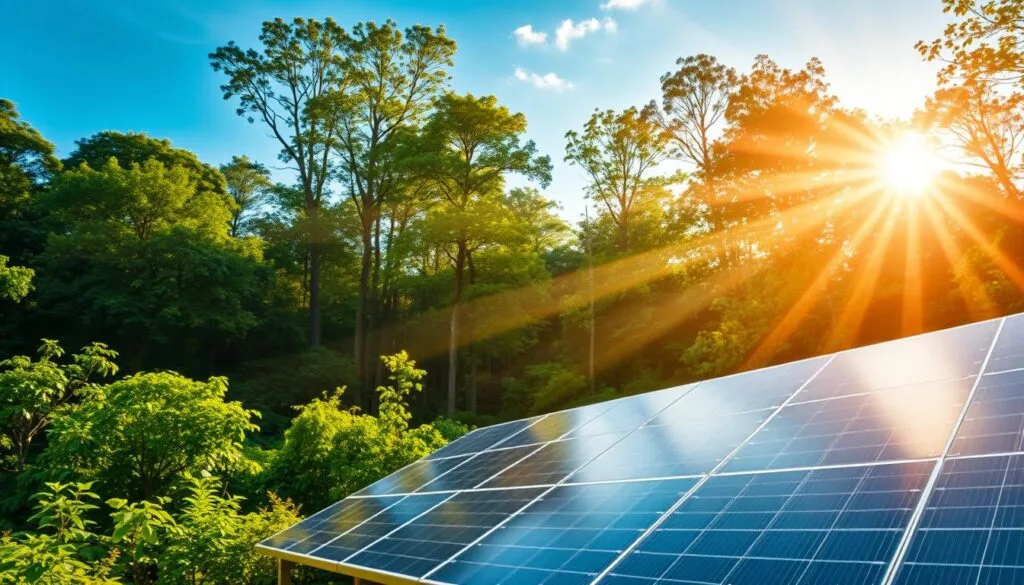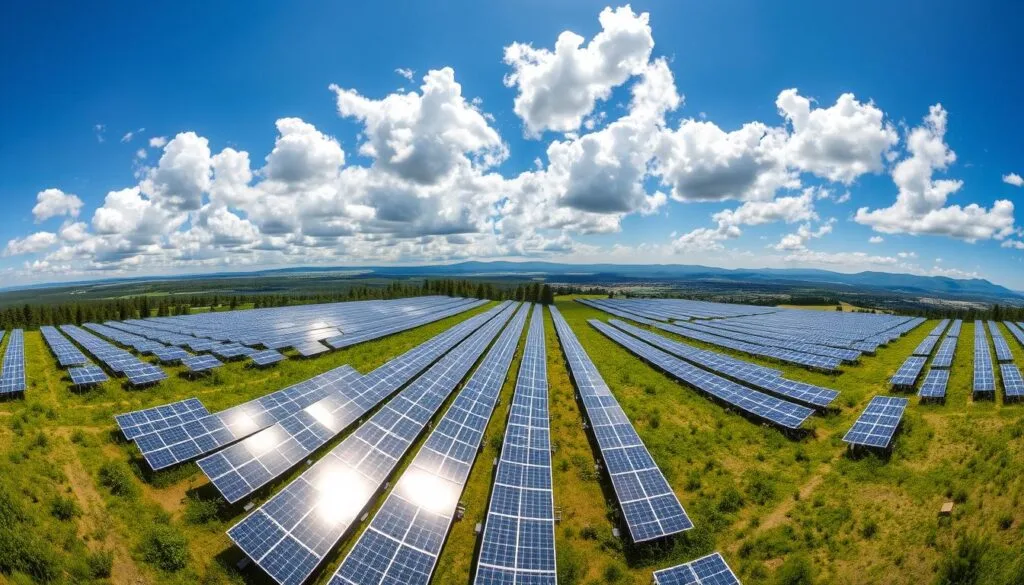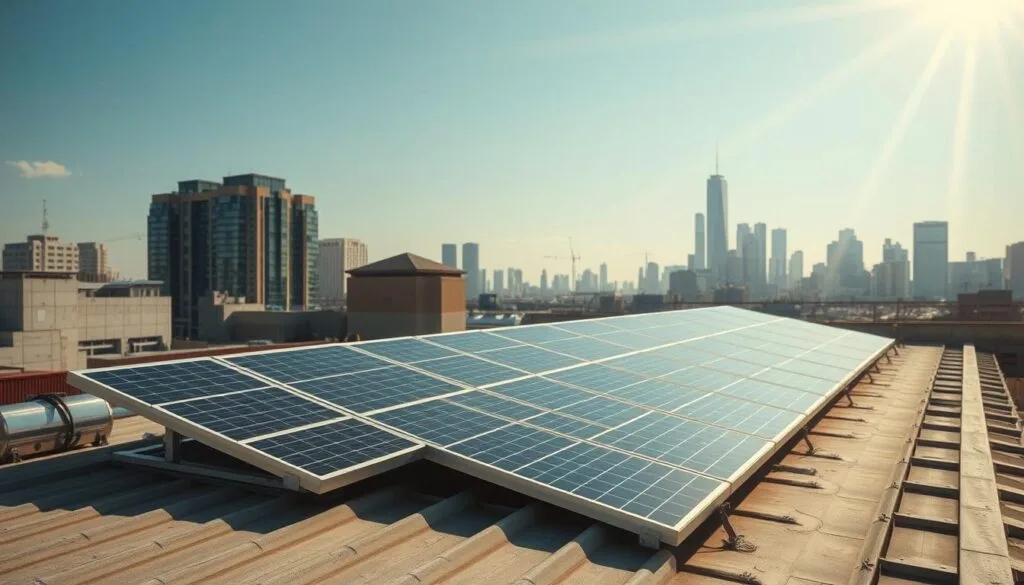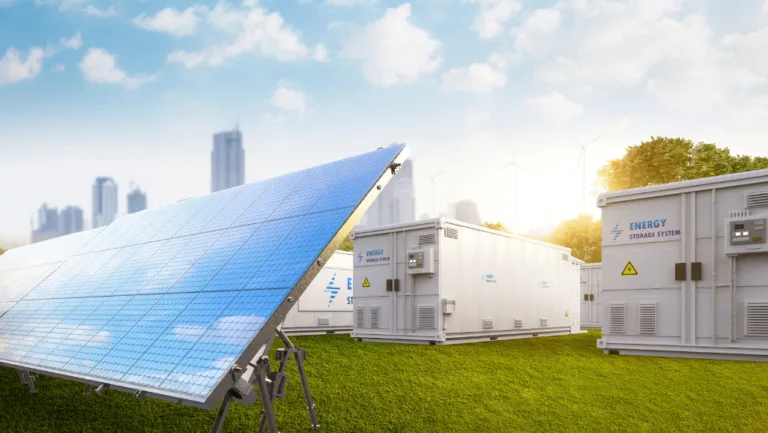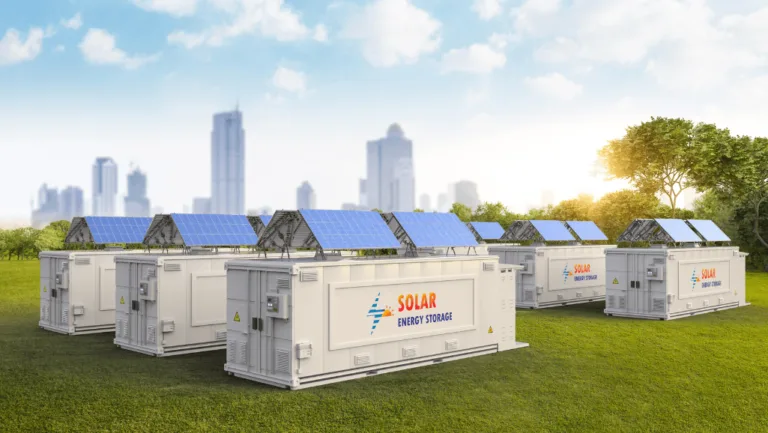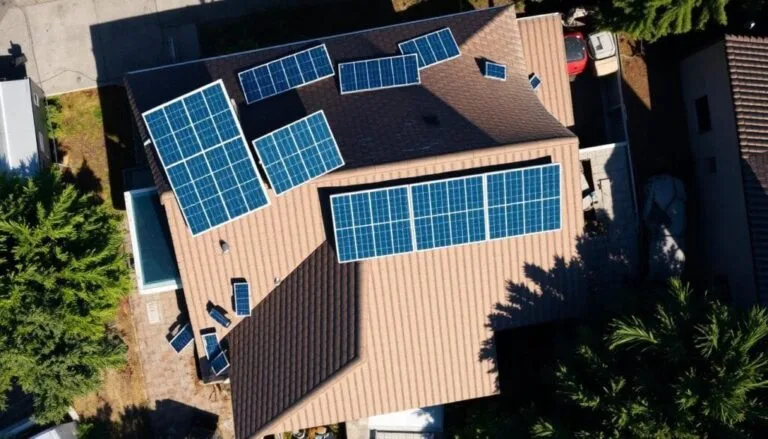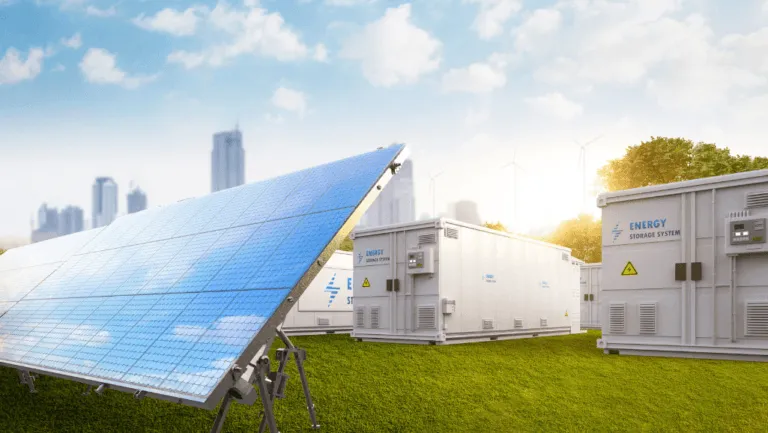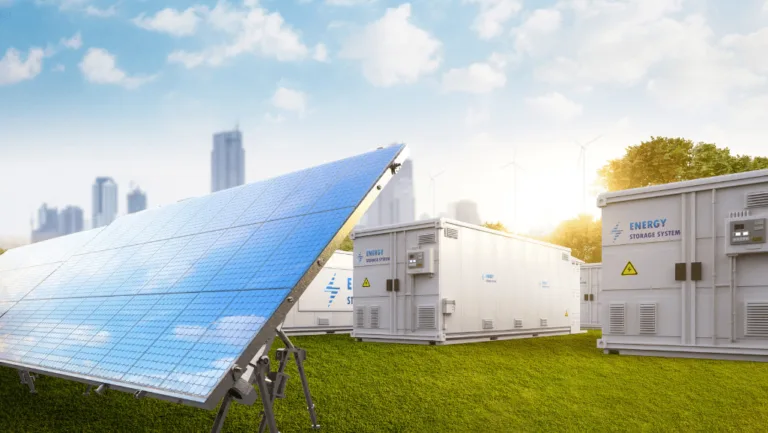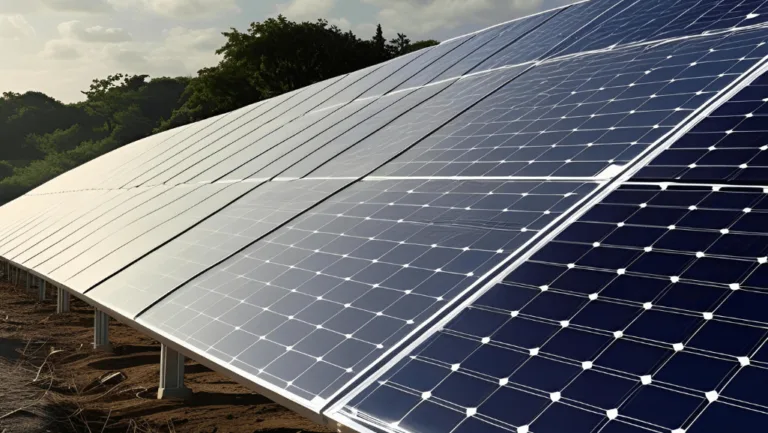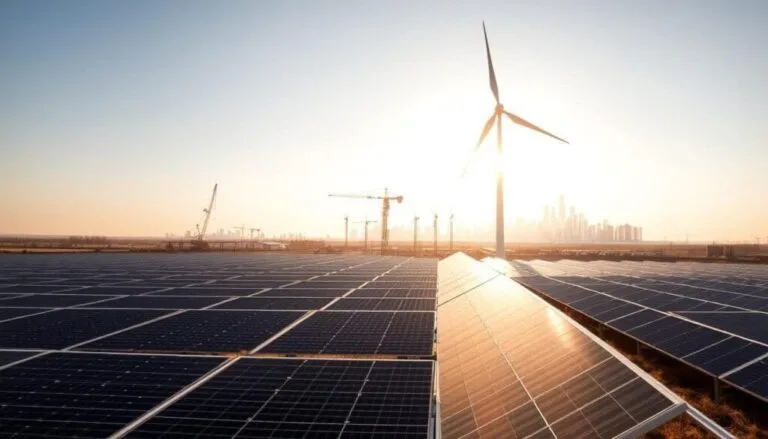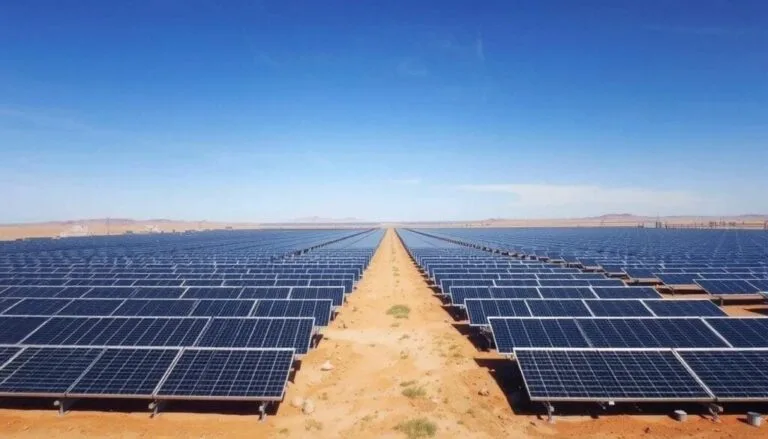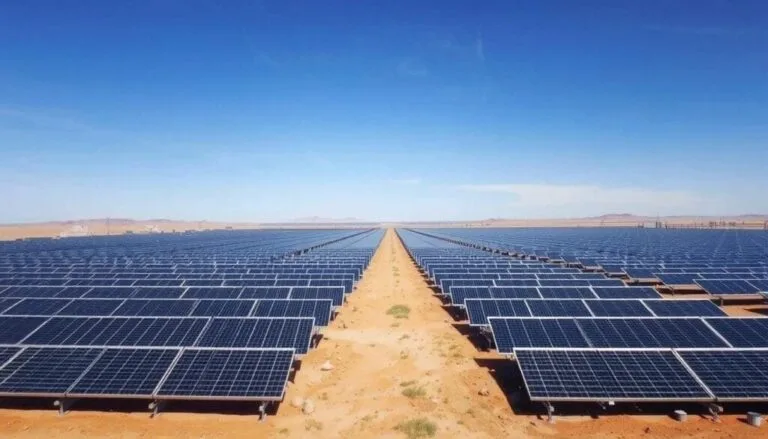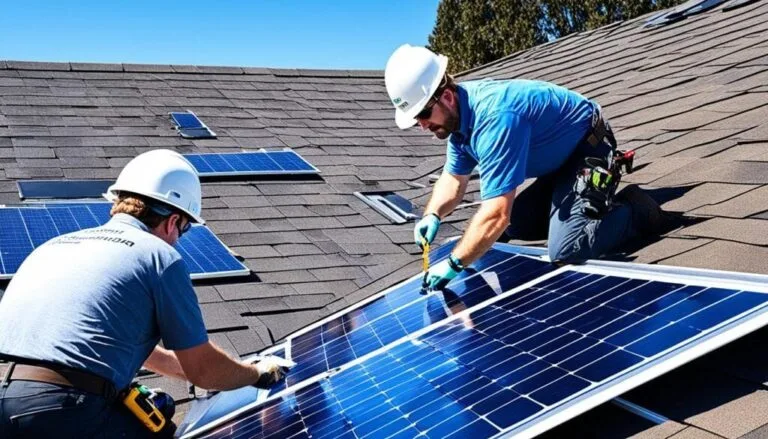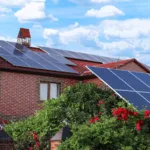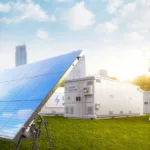Exploring solar power shows its huge potential as a renewable energy source. It’s a key part of sustainable power solutions worldwide. Solar tech has grown, offering new ways to use the Sun’s energy. This energy is mostly unused, giving us a chance to meet our energy needs in a responsible way.
Looking closer at solar power, we see it powers our homes, industries, and even the International Space Station. This energy can get hot enough for power, like in solar power towers. It shows how nature and human creativity can work together.
Key Takeaways
- Understanding solar definition reveals its role as a sustainable power solution for future energy demands.
- Solar technologies range from photovoltaics generating electricity to passive solar designs for heating and cooling.
- With the sun’s energy being plentiful and nonpolluting, solar power stands at the forefront of renewable energy sources.
- Integrated solar energy systems bolster energy independence while reducing electricity costs and aiding grid resilience.
- Advancements in solar technologies may lead to substantial economic growth and job creation within the renewable energy sector.
Solar Energy Explained: The Sun as a Powerhouse
The sun is a constant source of energy, powering many Earth processes through nuclear fusion and electromagnetic radiation. It’s the main source of solar energy, vital for life and ecosystems. New technologies use the sun’s energy, showing its huge potential.
Understanding the Phenomenon of Nuclear Fusion
Nuclear fusion happens in the sun’s core. It’s when hydrogen atoms combine, making helium and releasing lots of energy. This process creates a huge amount of energy, key for solar power and solar technologies.
The Role of Electromagnetic Radiation in Solar Energy
Electromagnetic radiation carries the sun’s energy to our planet. It includes visible light, ultraviolet, and infrared. Earth absorbs most ultraviolet rays but lets in infrared and visible light. These rays are crucial for photosynthesis and the water cycle, essential for life.
Learning about the sun and its effects shows how important solar power is. It helps us understand how solar energy explained affects our lives and the planet. This knowledge boosts the use of solar power, especially in places focused on energy efficiency.
Using solar technology helps us use this abundant energy and supports sustainable living. DIY solar projects let people and communities play a part in this green energy shift.
In sunny areas, solar power has grown to meet our energy needs. These advances show how solar technology is becoming a key energy source, helping the planet.
Solar power is key to a sustainable future. It’s driving change with new uses and spreading important info, based on solar power facts.
Natural Solar Energy: Earth’s Lifeline
Natural solar energy is key to keeping Earth’s ecosystem balanced and healthy. It comes from the Sun and powers important processes like photosynthesis and the greenhouse effect. These processes shape our environment and support life.
Photosynthesis: The Foundation of the Food Web
Photosynthesis turns sunlight into chemical energy, which is vital for all life. Plants, algae, and some bacteria use sunlight, water, and carbon dioxide to make glucose and oxygen. This supports the food web and gives us the oxygen we need to breathe.
Did you know that tiny plankton in the ocean make over half of Earth’s oxygen through photosynthesis? This shows how big and important this process is.
The Greenhouse Effect and Its Significance
The greenhouse effect warms our planet by trapping infrared energy from the Sun. This keeps Earth’s temperature right for life. It’s often linked to global warming, but it’s also vital for life by keeping the climate stable.
Looking at solar energy advantages and disadvantages, we see it works like nature but on a human scale. Solar panels turn sunlight into electricity, just like plants do through photosynthesis. This way of making electricity cuts down on carbon emissions, helping to reduce the greenhouse effect.
| Aspect | Impact on Environment | Direct Benefits |
|---|---|---|
| Solar Energy Adoption | Reduces greenhouse gas emissions, enhances air quality | Lowers energy bills, increases energy independence |
| Photosynthetic Oxygen Production | Contributes significantly to breathable air supply | Supports terrestrial and marine life diversity |
Exploring natural solar energy and its modern technology shows us that going green is key for our future. With government help through rebates and tax credits, moving to solar power is easier than ever.
Benefits of Solar Power: Clean and Sustainable Energy
Our society is moving towards sustainable practices, making solar power more important. Solar energy is key for a green future. It offers big advantages over old energy systems. This change helps the planet and gives more energy freedom worldwide.
Environmental Impact: Reduction in Greenhouse Gases
The environmental impact of solar power is huge. Old ways of making electricity release a lot of greenhouse gases. Solar energy cuts down on these gases a lot.
Solar panels only release a tiny bit of CO2 during their whole life. This is much less than old energy sources. Using solar power can greatly lower the carbon footprint of electricity. It could even cut U.S. power plant CO2 emissions by 277 million metric tons a year by 2025.
Solar Power’s Role in Energy Independence
Switching to solar power makes us less dependent on foreign fuels. These fuels can be unstable and affected by world events. Solar energy helps local economies grow without these problems.
It also creates jobs and helps with new technology. In 2016, over 260,000 people worked in the solar industry, up 25% from the year before.
In summary, solar power has many benefits. It cuts down on harmful gases, helps us rely less on others for energy, and boosts local economies. Solar energy is a key part of a better, cleaner future for everyone.
Solar Panel Definition and Their Role in Energy Conversion
The term solar panel definition covers the tech and systems that turn sunlight into electricity. This process uses renewable power and solar photovoltaics. Solar panels are key in changing sunlight into electricity for homes and businesses.
Solar panels use crystalline silicon cells to catch and convert light well. But, they’re not perfect due to panel setup and cell differences. For example, a typical solar module has 36 cells in an aluminum frame, covered with glass. It changes sunlight into electricity, but not always efficiently.
Efficiency has gotten better over time. Back in the 1980s, it was less than 10%. Now, some models can reach up to 25% efficiency.
| Year | Efficiency |
|---|---|
| Mid-1980s | Less than 10% |
| 2015 | ~15% |
| 2023 | Up to 25% |
Solar panels can work alone or connect to the power grid. Stand-alone systems need a battery for power at night or on cloudy days. This makes them more expensive. Grid-connected systems send electricity directly to the grid, but they need special equipment.
Solar panels are key to renewable power and keep getting better. They help us use energy without harming the planet. Knowing how solar panels work and their role in making energy is important for a greener future.
Solar Power vs Traditional Energy: A Comparative Analysis
The move from traditional energy to solar power brings big changes in cost, health, and the environment. This look compares costs over time and how they affect health and the planet.
Cost Comparison over Time
At first, solar power vs traditional energy shows a higher cost for solar tech. In Seattle, solar setups cost between $10,000 and $30,000. But, the Federal Investment Tax Credit (ITC) can cut this cost by up to 30%. This makes solar more affordable over time.
Solar systems pay back the initial cost and save money on bills. This shows solar is a smart financial choice. Here’s a table that compares costs and savings.
| Energy Type | Initial Cost | Long-Term Savings | Efficiency |
|---|---|---|---|
| Solar Power | $10,000 – $30,000 | High (5-20 years ROI) | Up to 47% |
| Traditional Energy | Varies | Low | ~40% |
Impact on Health and Environment
Solar power has big health and environmental benefits over traditional energy. It doesn’t produce emissions, which means less pollution and fewer health problems. Traditional energy, on the other hand, can cause air pollution and harm the planet.
Solar power is good for the environment and helps fight global warming. It’s a key part of a sustainable future.
How Does Solar Energy Work: From Sunlight to Electricity
Learning how solar energy turns into electricity is key to seeing its role in renewable energy. Solar power uses the sun’s energy with special technologies. This is important for our move towards sustainable living.
Photovoltaic Systems and the Photovoltaic Effect
Photovoltaic systems rely on the photovoltaic effect. This is when solar panels, often made of silicon, change sunlight into electricity. This happens when sunlight’s photons give electrons a boost, creating power. For homes and businesses, these systems can cut energy bills, boost property value, and help the planet.
Advances in photovoltaic tech, like the high-efficiency Maxeon 7 panels, show how the field is evolving. You can find more about these on Solar Power World’s home solar systems.
Concentrating Solar Power Systems
Concentrating solar power (CSP) systems focus sunlight with mirrors or lenses into a beam. This beam is then used as heat or turned into electricity with steam turbines or engines. These systems are great for making lots of electricity at once, which is useful for big power projects.
CSP and photovoltaic systems both use solar energy but in different ways. This means they can be used in various places based on local needs. For more info, check out National Grid’s guide on solar power.
| System Type | Primary Use | Efficiency | Benefits |
|---|---|---|---|
| Photovoltaic Systems | Residential, Commercial | 15%-23% | Changes sunlight directly into electricity, good for smaller scales and changing environments. |
| Concentrating Solar Power | Industrial, Utility | Depends on sunlight focus | Uses heat, perfect for big energy needs. |
Photovoltaic and CSP systems are key to our renewable energy future. They meet different energy needs in unique ways. As technology gets better and more people use solar power, knowing how these systems work will be important. This is true for anyone looking to use solar power at home, in business, or for industry.
Solar Power Facts: Debunking Common Myths
In the world of renewable energy, solar power facts often mix with solar myths. This mix creates confusion about a key energy source. We aim to clear up these myths and show the real power of solar energy. We’ll use recent solar technology advancements to support our points.
Many think solar panels don’t work on cloudy days. But, the truth is, solar panels can still make electricity on cloudy days. They use sunlight to make energy even when the sky isn’t fully clear. This shows how flexible and advanced solar technology is.
Some believe solar energy can’t be saved for later. But, today’s systems have solar battery storage. This lets you save energy for the night or during power cuts. It’s a big step forward in solar technology.
There are worries about the environmental impact of getting rid of solar panels. But, up to 95% of a panel can be recycled. With new recycling tech, solar power is a green choice. Learning more about solar power’s role in fighting climate shows its many benefits.
| Fact | Detail |
|---|---|
| Job Creation | Clean energy jobs employ over 415,000 Americans. |
| Economic Contribution | Solar projects contributed approximately $564 million in taxes and land-lease payments in 2021. |
| Environmental Impact | Solar energy systems avoided the equivalent of 86 million cars’ worth of CO2 emissions annually. |
| Recycling Potential | At end-of-life, about 90-95% of solar PV panel materials can be recycled. |
| Energy Efficiency | Solar panels maintain operational efficiency throughout their 25-30 year lifespan. |
Knowing these solar power facts helps us appreciate solar technology advancements and renewable energy more. As myths fade, the way forward for renewable energy in sustainable global growth becomes clearer.
Solar Power Definition for Kids: Simplifying the Concept
Teaching kids about solar power means explaining how sunlight turns into electricity in simple terms. The goal is to give simple explanations and show how it helps our planet. This makes renewable energy education fun and important for kids.
Simple Explanations of Solar Power Operations
Solar power uses sunlight to make electricity with solar panels. These panels have tiny units called photovoltaic (PV) cells. Let’s break it down for kids:
- Solar panels catch sunlight.
- The PV cells in the panel turn the sunlight into electricity.
- This electricity can then power schools, homes, and even your favorite toys.
This way, kids can understand the basics of solar energy easily.
Engaging Youth in Renewable Energy Discussions
It’s key to teach kids about renewable energy to make them care about the planet. Kids love to learn and help, making solar power a great topic. Activities like making solar models or visiting solar farms can spark their interest.
Here are some cool facts about solar power for kids:
| Fact | Detail |
|---|---|
| Solar Panel Lifespan | Up to 30 years |
| Energy from Sunlight | One hour of sunshine can meet the Earth’s energy needs for a year |
| Carbon Dioxide Emissions | Solar panels do not produce any when generating electricity |
| U.S. Solar Energy Use in 2022 | About 1,870 trillion British thermal units (Btu) |
| China’s Leadership | Top producer of solar electricity in 2021, with 33% of world total |
Conclusion
Looking at renewable energy, it’s clear that solar power is key for a green future. The Earth gets 122 petawatts of solar energy every year, way more than we use. This clean energy source has huge potential, offering a future where our energy needs are met without harming the planet.
Solar power has many uses, like heating water in places like China, Israel, and Cyprus. In 2020, it made up 3.5% of the world’s electricity. Solar thermal tech, which started with pioneers like Augustin Mouchot and Frank Shuman, is also growing. It helps with heating, cooling, and even industrial processes.
But, solar energy has its challenges, like high costs and needing a lot of space. It also depends on the weather. Despite this, it’s a big part of making the world more sustainable.
To make solar energy a big part of our energy mix, we need new ideas, public support, and good policies. Solar energy could give us thousands of exajoules a year. This would help with energy security, the economy, and protecting the environment. The future looks bright for solar energy as we move away from fossil fuels.

